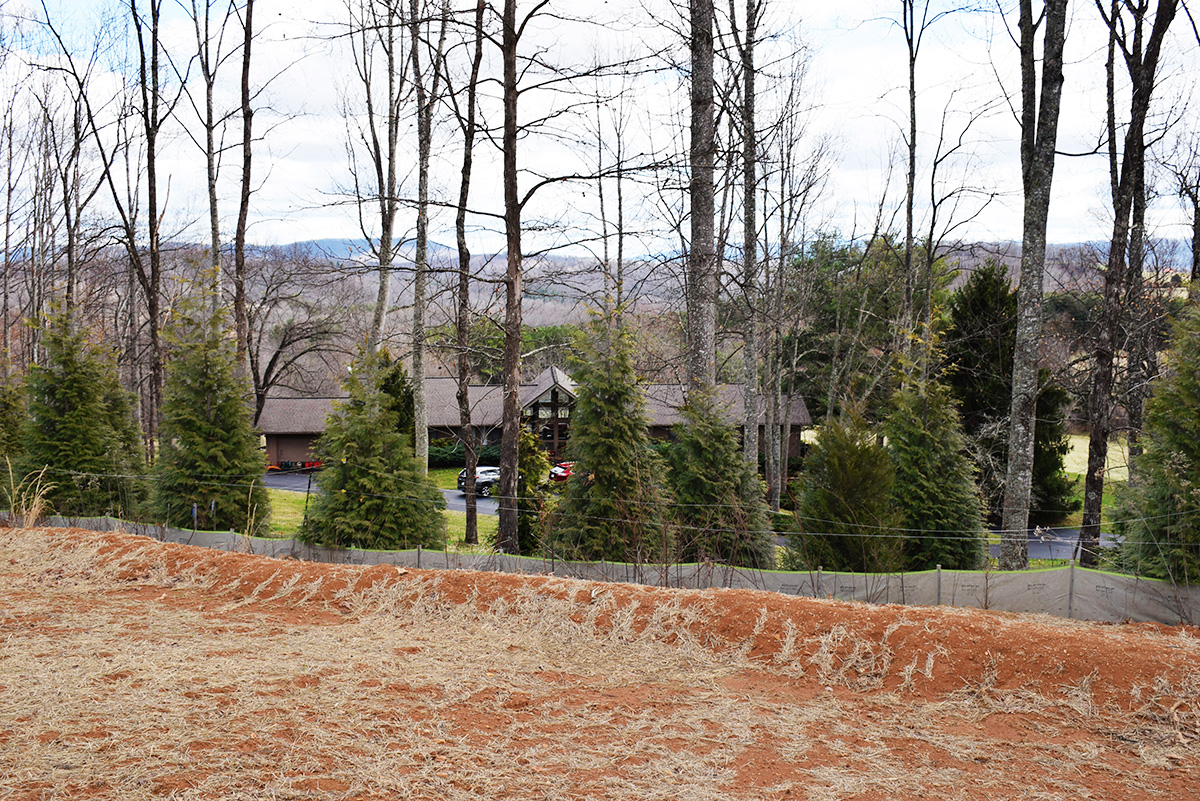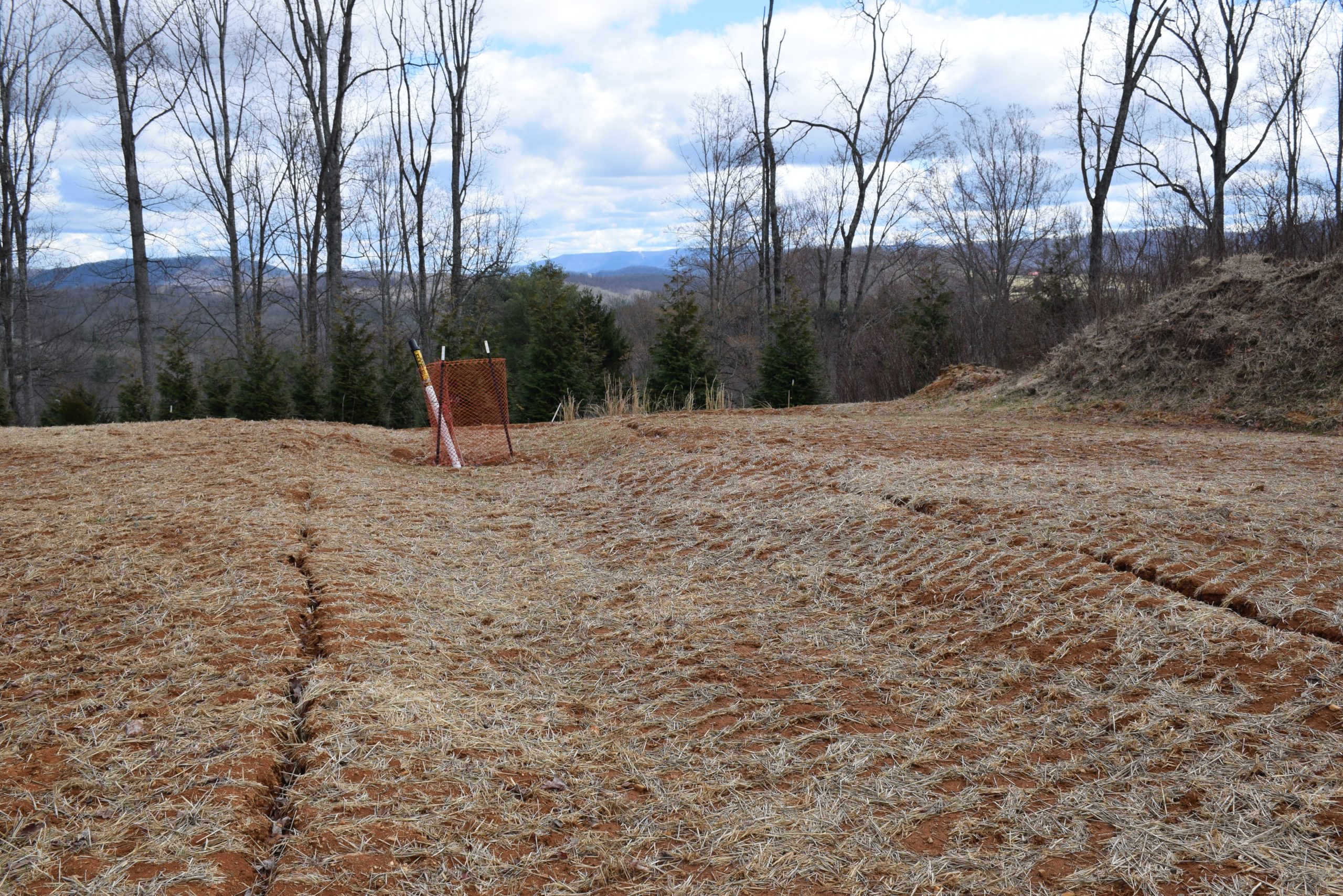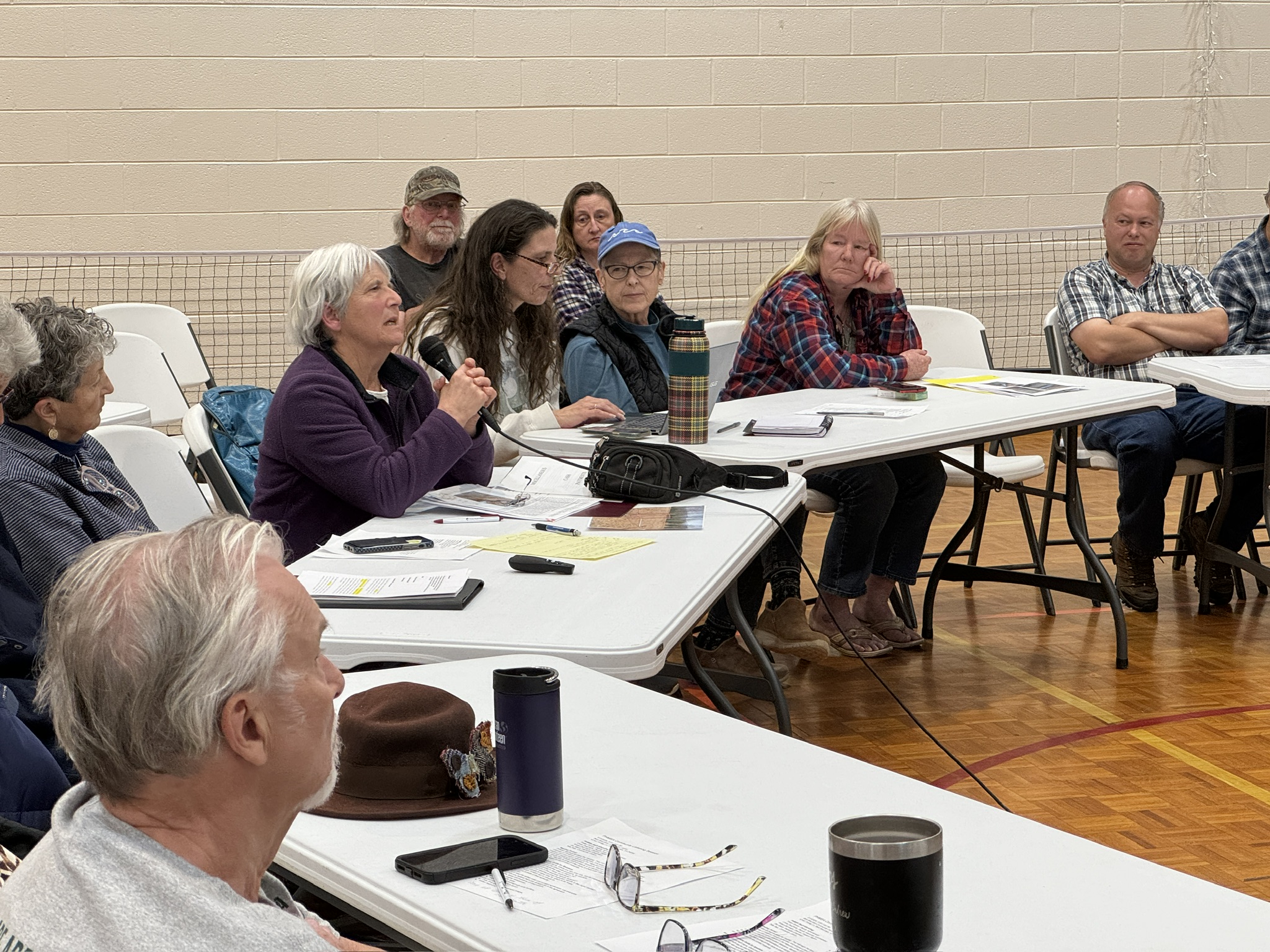Mountain Valley Pipeline Safety Issues Continue

PHMSA Deputy Administrator Tristan Brown (foreground) listens to Georgia Haverty, a Giles County landowner (center), during a Bent Mountain community meeting on March 13. Photo by Dan Radmacher
Update: On April 22, Mountain Valley Pipeline sent a letter to the Federal Energy Regulatory Commission asking for official permission by May 23 to place MVP in service.
“Requesting an in-service decision by May 23 leaves the company very little time to implement the safety measures required by its agreement with PHMSA,” said Jessica Sims, Virginia field coordinator for Appalachian Voices, the nonprofit organization that produces this publication. “There is no rush, other than to satisfy MVP’s capacity customers’ contracts — a situation of the company’s own making. We remain deeply concerned about the construction methods and the safety of communities along the route of MVP.”
Less than two weeks after MVP sent that letter, a section of buried pipeline ruptured during hydrostatic testing — which involves sending water through the pipeline at high pressure. Twenty-three Virginia legislators wrote FERC to oppose MVP’s in-service request, citing the rupture as an “alarming” indication that the pipeline is not ready.
By Dan Radmacher
On an early spring evening, dozens of residents impacted by construction of Mountain Valley Pipeline showed up at Bent Mountain Center in Virginia. A long-needed meeting with representatives from the federal Pipeline and Hazardous Materials Safety Administration finally came together after months of failed attempts and cancellations.
It was the first chance many had to speak directly with state or federal regulators about their longstanding concerns over the pipeline’s construction and the dangers it could pose once operational.
And they had a lot to say.
Some brought photographs of problems with pipeline installation — lack of supports for the pipeline in the trench, rocky outcroppings that could pierce the pipe if the ground beneath the trench should shift, and more. Others talked about dangers posed by the steep grades, sharp turns, fragile karst topography and potential seismic activity.
“I’m proud of the community and how we showed up and made clear how much we know,” says Russell Chis-holm, managing director of the Protect Our Water, Heritage Rights Coalition. “There’s still some lingering frustration in terms of what we do from that meeting going forward if PHMSA can’t guarantee our safety. We’ll have to continue to keep each other safe as best we can.”
Many of the responses from PHMSA staff seemed to highlight powers the agency does not have as well as the limits of its resources.
When a community member expressed concern about how close the pipeline route was to homes, Deputy Administrator Tristan Brown said, “Congress gives us no authority to regulate setbacks.”

Robert Jones’ home is literally a stone’s throw away from the pipeline right-of-way. Photo by Dan Radmacher
“PHMSA does not have authority to permanently shut down any pipeline,” said Deputy Associate Administrator Linda Daugherty when another person asked what circumstances could prompt the agency to stop construction on a pipeline. “We don’t have the authority to say we don’t like how you are constructing the pipeline, so we are shutting it down.”
The agency can issue a Notice of Proposed Safety Order if it finds unsafe conditions that require action by the pipeline developer — as it did with MVP in October 2023. The agency noted several concerns, including the effect of protective pipeline coating being exposed to the elements over years of construction delays.
That order led to a consent agreement between the agency and the pipeline developer that outlined review requirements for recoating the pipeline and other construction issues.
PHMSA staff tried to offer some reassurances. The consent agreement will require the developer to run a baseline test checking for corrosion and measuring the thickness of the pipe, a test that usually doesn’t happen until after the pipeline is in service for years. But discussion of these measures and promises to investigate some of the issues documented by community members did little to alleviate the palpable anger and frustration in the room.
“PHMSA staff talked a lot about how they were there to listen to the community,” says Jessica Sims, Virginia field coordinator for Appalachian Voices, the organization that produces this publication. “But they cannot understand what it feels like to live in the blast zone of a pipeline when it does not seem like state and federal regulators are doing nearly enough to protect you.”

Robert Jones has written a book, “Fighting Pipelines and Government Agencies,” about his interactions with regulatory agencies during the fight against Mountain Valley Pipeline. Photo by Dan Radmacher
Robert Jones’ house is about half a football field away from the pipeline. The retired engineering professor has contacted PHMSA and the Federal Energy Regulatory Commission repeatedly about concerns he has over a section of pipe near his home that was installed last year.
Jones believes the trench wasn’t backfilled and compacted properly, and the pipe didn’t have proper support beneath it. There are visible cracks in the ground running where the trench was dug, and a pipeline marker that was at a 90-degree angle is now drunkenly tilted, indicating that the ground beneath has shifted.
In reports sent to federal agencies, Jones and his neighbor Lynda Majors warn that these conditions indicate “a serious construction problem that could lead to an explosion at a pipeline crossover in Montgomery County when the pipeline is filled with gas.”
The crossover connects two sections of pipe on either side of the right-of-way. According to Jones, the purpose of the crossover is to allow for thermal expansion and contraction of the pipeline.

The settling of dirt where the trench was is clear. The pipeline marker was once perpendicular to the ground but has shifted as the dirt settled. Photo by Dan Radmacher
The report is filled with pictures taken by Majors, who routinely monitors the right-of-way and took photos of various stages of the crossover construction and the settling of the ground over the installation. The photos show a length of pipe installed in the trench that is not supported by sandbags, as it normally would be.
The photos also show the progression as the ground settled, cracks appeared and the marker tilted more and more over several months following the installation and burial of the pipe.
Jones and Majors were not very satisfied by the response from federal regulators. FERC responded by forwarding a letter from the pipeline developer that denied what it called “serious yet unfounded allegations regarding pipeline construction” in the report.
MVP’s letter included a photo the company said showed the pipe resting on sandbags, a photo Jones dismissed as “inconclusive” in a response to FERC.
After Jones followed up, FERC responded by saying his concerns fell under PHMSA’s areas of responsibility.
Nita Raju, a PHMSA community liaison, wrote, “At the crossover trench site in question, final restoration work is still pending. The applicable MVP documents were reviewed and there were no non-compliances found.”
Majors was let down by the response.
“What this tells us is … how little agencies care,” she says.
Jones was a bit more blunt.
“We’re stuck with a bunch of yo-yos who point their fingers at each other,” he says. “They shift responsibility for any action. MVP does something wrong and I point it out, but nothing happens.”
While he’s especially concerned with the problems he sees with the crossover near his home, Jones believes the entire route is misguided and dangerous.
“You’ve got poor soil, landslides, the Giles County seismic zone, frequent downpours and karst topography,” says Jones. “FERC only looks at damage to environmental features like streams and wetlands. They should not just be asking what the pipeline can do to the environment — they should be asking what the environment can do to the pipeline.”
If MVP is allowed to go into service, some things will change in the Jones’ household.
“We used to host Thanksgiving, Christmas and birthdays here,” he says. “I can’t imagine having my family members come here with the possibility the pipeline could explode. I wouldn’t put my family in that position.” ◆
The Appalachian Voice reached out to officials in Roanoke and Montgomery counties to find out what, if any, special safety planning is happening as the final stretches of pipeline are trenched. Both counties said that, while they don’t have specific emergency plans for pipeline disasters, they have plans that cover a variety of situations.
“First responders across Montgomery County have received specialized training from Paradigm, a company that specializes in pipeline training,” says Mary Biggs, chairwoman of the Montgomery County Board of Supervisors.
Roanoke County first responders have not received training specific to pipeline emergencies, according to Amy Whittaker, public information officer for the county.
“Public safety agencies are already prepared for any kind of emergency,” Whittaker says. “We have emergency drills, including tabletop drills and real-world-type drills on how to respond to emergencies. We keep emergency personnel trained and ready.”
Officials in both counties said they have mutual aid response plans to coordinate response to incidents with the pipeline along the portion of the route that stretches along the counties’ borders.
The post Mountain Valley Pipeline Safety Issues Continue appeared first on Appalachian Voices.
Protecting the Central and Southern Appalachian Mountain Region
Source: https://appvoices.org/2024/05/15/mvp-safety/
Anyone can join.
Anyone can contribute.
Anyone can become informed about their world.
"United We Stand" Click Here To Create Your Personal Citizen Journalist Account Today, Be Sure To Invite Your Friends.
Humic & Fulvic Liquid Trace Mineral Complex
HerbAnomic’s Humic and Fulvic Liquid Trace Mineral Complex is a revolutionary New Humic and Fulvic Acid Complex designed to support your body at the cellular level. Our product has been thoroughly tested by an ISO/IEC Certified Lab for toxins and Heavy metals as well as for trace mineral content. We KNOW we have NO lead, arsenic, mercury, aluminum etc. in our Formula. This Humic & Fulvic Liquid Trace Mineral complex has high trace levels of naturally occurring Humic and Fulvic Acids as well as high trace levels of Zinc, Iron, Magnesium, Molybdenum, Potassium and more. There is a wide range of up to 70 trace minerals which occur naturally in our Complex at varying levels. We Choose to list the 8 substances which occur in higher trace levels on our supplement panel. We don’t claim a high number of minerals as other Humic and Fulvic Supplements do and leave you to guess which elements you’ll be getting. Order Your Humic Fulvic for Your Family by Clicking on this Link , or the Banner Below.
Our Formula is an exceptional value compared to other Humic Fulvic Minerals because...
It’s OXYGENATED
It Always Tests at 9.5+ pH
Preservative and Chemical Free
Allergen Free
Comes From a Pure, Unpolluted, Organic Source
Is an Excellent Source for Trace Minerals
Is From Whole, Prehisoric Plant Based Origin Material With Ionic Minerals and Constituents
Highly Conductive/Full of Extra Electrons
Is a Full Spectrum Complex
Our Humic and Fulvic Liquid Trace Mineral Complex has Minerals, Amino Acids, Poly Electrolytes, Phytochemicals, Polyphenols, Bioflavonoids and Trace Vitamins included with the Humic and Fulvic Acid. Our Source material is high in these constituents, where other manufacturers use inferior materials.
Try Our Humic and Fulvic Liquid Trace Mineral Complex today. Order Yours Today by Following This Link.







